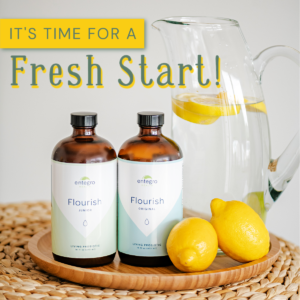Made To Move
Exercise: For Humans and Bacteria Alike
Everyone knows that exercise is good for us. And many of us know that a diverse, healthy bacterial population is good for us. But did you know that exercise may also have a beneficial effect on our friendly hitch hikers, too? We were all made to move.
Background
I come from a fitness background and some of the most common questions are a variation of:
What is the #1 best type of exercise of all time?
It is a good question that is most broadly answered – the best exercise is the one you’re going to do. Something is always better than nothing. The fact of the matter is, our bodies are amazing and adaptable specimens. It responds to the stresses placed (or not placed) on it and adapts to meet those needs. As it turns out, as is so often the case with our microbiome, it’s a two-way street when it comes to gut bacteria and exercise. Not only does our exercise have an influence on the bacteria who live there, the microbiome also influences the way we exercise and even perform athletically.
Exercise & the Microbiome
Current studies are showing that the benefits of exercise are very simple when applied to the gut. It appears as though all exercise is beneficial, but aerobic exercise and the microbiome is the most researched. Let’s take a closer look.
Disease Prevention
It is well established that regular exercise of any type is associated with a 50% reduced risk of colon cancer. The mechanism, or the steps of how it works, has not been understood.1 As technology and knowledge advance, the current understanding is that the pathway of prevention occurs through improved bacterial diversity. This increase of diversity produces an increase of fermented products by the bacteria, namely short-chain fatty acids (SCFA).2, 5 These SCFA are then absorbed through the topmost lining of the intestine, the mucosa. Researchers’ current thinking is that the body’s microbiome influences the body similar to an endocrine organ. Just like the endocrine system releases hormones to the bloodstream, gut bacteria release compounds such as SCFA, which are then transported across to the lining of the gut.
 From there the compounds are picked up by blood or lymph to reach the target tissue. Just one example of an important target site in the brain, giving us our current understanding of the “gut-brain axis.” This endocrine-like contribution to the body is helpful in maintaining homeostasis. 5 Homeostasis is the body’s ability to maintain a steady equilibrium despite the many processes going on in the background.
From there the compounds are picked up by blood or lymph to reach the target tissue. Just one example of an important target site in the brain, giving us our current understanding of the “gut-brain axis.” This endocrine-like contribution to the body is helpful in maintaining homeostasis. 5 Homeostasis is the body’s ability to maintain a steady equilibrium despite the many processes going on in the background.
Short-Chain Fatty Acid Production
A study done on rats in 2008 showed that, over a 5-week period, mice who voluntarily exercised had a much different gut than mice who were not allowed to exercise. Not only was there a significant difference in butyrate production, but the cecum (pouch right after the small intestine, first part of the large intestine where the majority of good bacteria live) itself was about 1.5x larger than the non-exercise group. This suggests that this portion of the colon is in better health and capable of producing the beneficial mucus barrier than their non-exercising peers.2
Diversity and Performance
Having a diverse microbiome is also beneficial for endurance performance. In a study performed in 2015 by Hsu et al., germ-free mice, mice with a single strain of gut bacteria, and mice with a healthy microbiome were placed in a swim to failure test. It was found that the germ-free mice swam for an average of 39 minutes, single strain mice for an average of 67.2 minutes, and regular microbiome mice for an average of 81.6 minutes. The germ-free and single strain mice were found to have a decrease in antioxidant enzymes compared to the regular microbiome mice and it is thought that this contributed to decreased performance. 4
Take Care of Your Gut Lining and It Will Take Care of You
Intestine plays the primary role of absorption of nutrients, fluids, and electrolytes – it’s the gatekeeper that keeps the good stuff inside and the bad stuff outside. A happy and diverse bacterial population produces SCFA, which in turn supports the lining of the intestine, which also keeps the bacteria happy. This delicate relationship is critical to keep in balance. Exercise (cardio has been the most studied) has been shown to support a diverse population and thereby increase SCFA. It appears that exercise training creates a more diverse health-promoting bacterial population in the gut, while reducing pathogenic bacteria, and improving exercise performance. Furthermore, the types of bacteria found in the exercising group guts are similar to the microbiota of people who have a reduced risk of type 2 diabetes and obesity.5
Exercise Type
Most studies of the microbiome and exercise are related to cardiovascular endurance or athletic performance. This represents both cardiovascular training as well as strength training, and both show beneficial outcomes on the gut. Yoga has long been noted for promoting digestion and gut support through twisting and stress management. These all go to show how our bodies and gut buddies rely on each other for mutual benefit in the many forms of exercise.
Challenge Accepted
My challenge for you this January is to move in a new way for a benefit to you and your microbiome. As we age, flexibility and strength are more important than ever as we look forward to the future of our health. Sign up for a yoga class or schedule a meeting with an educated fitness professional to see what some options are. Here are some recommendations as you start or return to an exercise routine:
1. Sign up for a minimum of 6 weeks.
You will begin to see some of the benefits of the changes you are making. If you choose to work on flexibility, just remember you didn’t get this inflexible in only 6 weeks. Allow yourself some time to work into a more flexible body too, and don’t expect a miracle after two sessions. Learning new things doesn’t just happen! It will take some work but learning new things can be fun.
2. Don’t compare!
I cannot stress this enough! Sure, Karen may have started the same workout program at the same time as you. You are two different people with two different lives and two different histories. Remember, you are on your journey, not Karen’s.
3. Sweating and being out of breath is not a bad thing.
Somehow, sweating has gotten a bad rap. When you start breathing heavily and begin to sweat, try to view this as a good thing and not a bad thing. It’s a mental attitude choice. Just go into the workout knowing this will happen and that it may be a little uncomfortable. The good news is that during this discomfort, gains will be made.
4. Find a workout buddy.
There are plenty of days I don’t want to get out of bed, especially in the winter! Thankfully, I know my friend Marci will be waiting for me. Just a little extra nudge is all it takes sometimes. And it’s always good to have a partner to be in misery with or complain about the workout together. Even being on the same schedule for streamed workouts with a pal can be helpful.
5. Put it in your schedule.
It’s true – you are busy! Work, kids’ school/co-curricular activities, church, lessons, food prep, and many other things that take time. These are real challenges. Accept the challenge! It always helps to combine activities if possible. Perhaps you can elliptical or ride a bike while you prepare for a meeting. Plan to meet a friend for coffee? Give a new workout or walk a try instead. Even stretching or foam rolling while watching reruns of The Office can help.
6. Listen to your body.
Are you feeling super sore or have a cold coming on? You can easily back off the workout intensity, or skip for the day. I highly recommend not skipping two scheduled workouts in a row – it’s just too easy not to go back to it again. Other than the case of sickness, something is always better than nothing when it comes to moving the old body.
7. Take a high-quality probiotic
Supply your gut with the diversity it craves! Flourish and Flourish Junior living probiotics supply eleven strains from five different families who would love to hang out with your resident gut buddies. This diversity will help support you in your workouts.
8. Find joy in movement.
We were made to move and moving can create joy! I’ve had many clients over the years who have had terrible middle school PE experiences and I’m always saddened to hear them. The good news is, you’re not the same person you were in middle school and there are many different ways to move other than the pickleball or basketball days of old.
Workout Buddies
You just really can’t go wrong as far as exercise and gut health goes. The next time your alarm goes off early in the morning, or you second guess putting your shoes on to go work out in the evening, you can do it. You’ve got millions of workout buddies who are counting on you!
Reference
- Colditz, G. A., Cannuscio, C. C., and Frazier, A. L., Physical activity and reduced risk of colon cancer: implications for prevention. Cancer Causes Control, 8, 649–667 (1997).
- Megumi MATSUMOTO, Ryo INOUE, Takamitsu TSUKAHARA, Kazunari USHIDA, Hideyuki CHIJI, Noritaka MATSUBARA & Hiroshi HARA (2008) Voluntary Running Exercise Alters Microbiota Composition and Increases n-Butyrate Concentration in the Rat Cecum, Bioscience, Biotechnology, and Biochemistry, 72:2, 572-576, DOI: 10.1271/bbb.70474
- Clarke SF, Murphy EF, O’Sullivan O, et al. Exercise and associated dietary extremes impact on gut microbial diversity. Gut 2014;63:1913-1920.
- Hsu YJ, Chiu CC, Li YP, et al. Effect of intestinal microbiota on exercise performance in mice. J. Strength Cond. Res. 2015; 29(2):552–8
- Campbell, S. C., & Wisniewski, P. J. (2017). Exercise is a Novel Promoter of Intestinal Health and Microbial Diversity. Exercise and Sport Sciences Reviews, 45(1), 41–47. doi: 10.1249/JES.0000000000000096
Written by Lorilyn VanDyke, entegro Health

 New customers! Get 11% OFF your first Flourish order with Code FRESHSTART11
New customers! Get 11% OFF your first Flourish order with Code FRESHSTART11